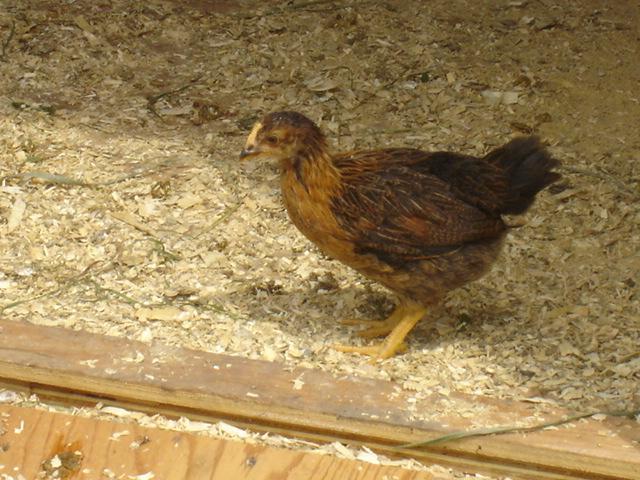I think pullet also, but wouldn't guarantee it. It has somewhat of a large comb & thick shanks, not too much, but enough that I would wait before personalizing its Christmas stocking. I don't think it's a Production Red though, maybe a Brown Leghorn or a Welsummer. If it's a Brown Leghorn then it's more certainly a pullet, it's got those feathers on its shoulders with the stripe of light color through the middle that only their pullets have. And BL pullets have large combs that flop when grown.
These are the signs I look for:
2-4 weeks: Males get pinker/redder combs, sometimes larger, shanks seem thicker
4-8 weeks: Males start sprouting little wattles under their chins, looking like teenagers sprouting their first beard hairs.
8-12 weeks: Males start sprouting thin pointy feathers on their hackles & saddles. You can part the feathers behind their necks & in front of their tails to look for these feathers emerging.
12-16 weeks: Males get a metallic sheen to their tail feathers, the curved sickle-shaped feathers start to grow there, they may begin to crow. Young cockerels learning to crow can sound really pathetic!
16-20 weeks: Males attempt mating with their female flock-mates. If these pullets are the same age they'll scream & fuss in protest, they won't be ready yet.
These times are my best-guess approximate estimates. I'm careful to notice these changes in my birds, but lousy at remembering just how old they are when I notice these characteristics. I may or may not remember to check the calendar back in the kitchen after spending time out with the flock, to verify that "oh, those guys look like this and they're that old today!" And of course, individual results may vary. Some cockerels are easy to identify almost right after they hatch, swaggering out of their shells and immediately reaching for the TV remote. Others can keep you guessing right up to the moment when one end crows or the other end lays an egg.






